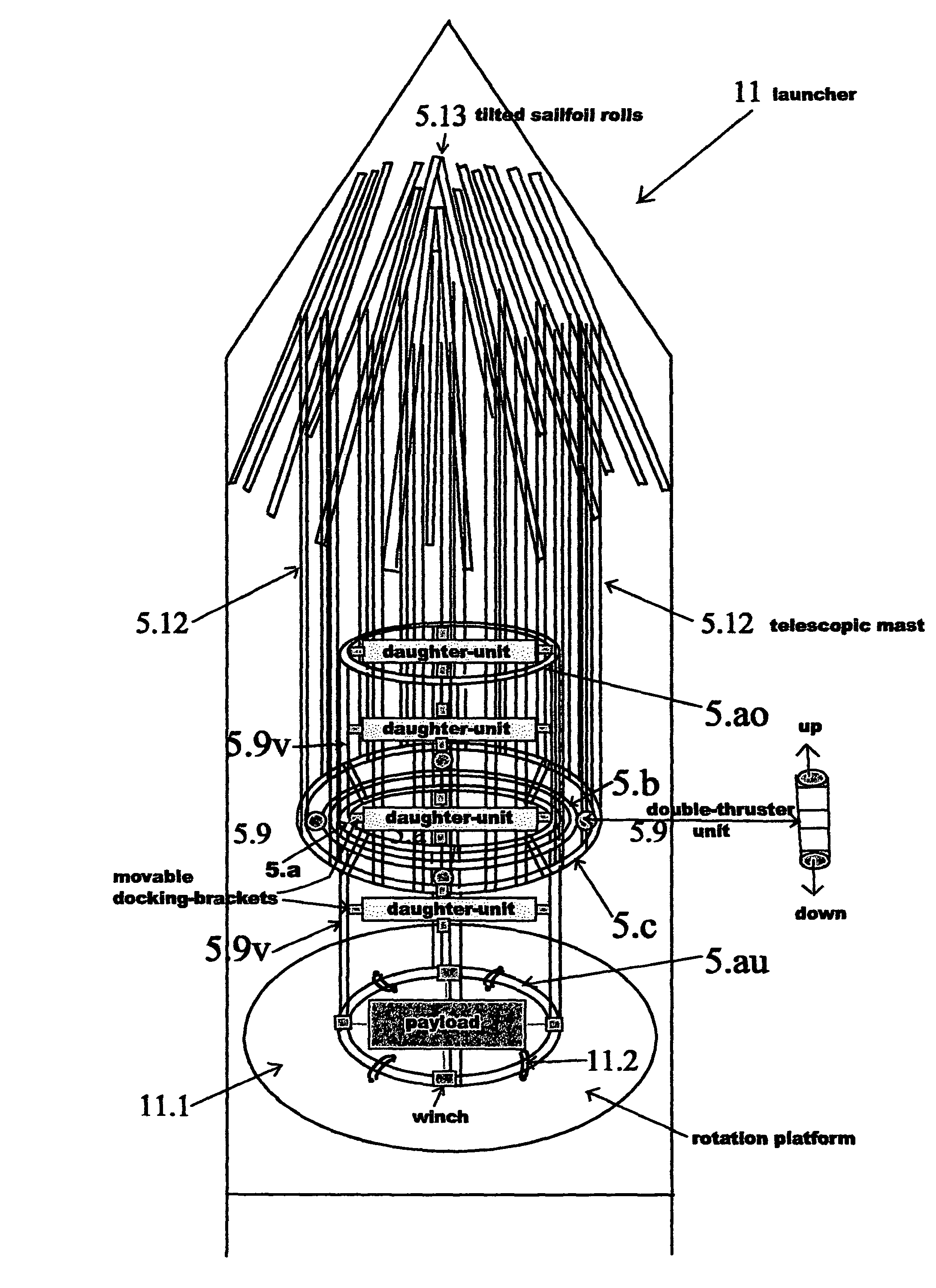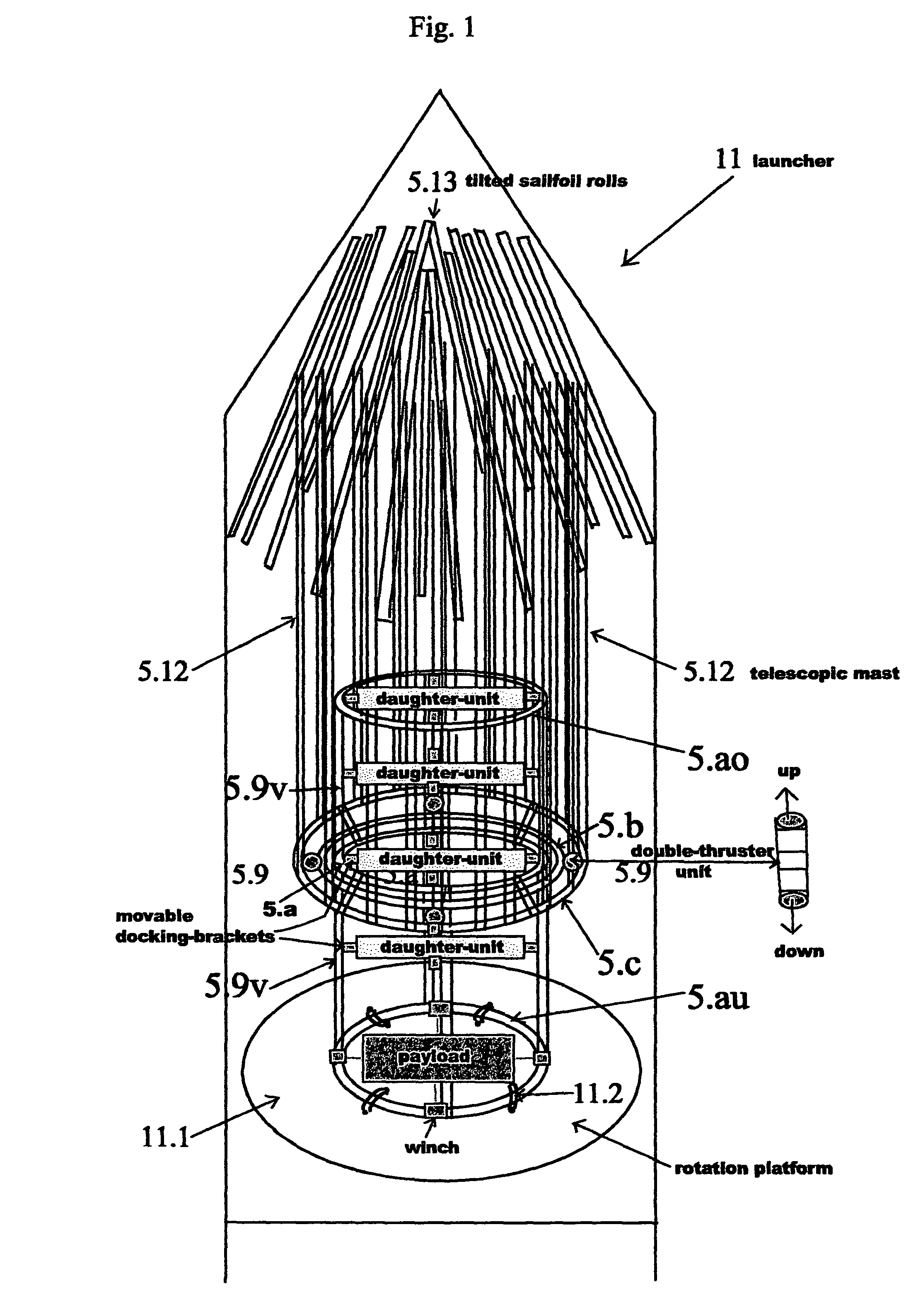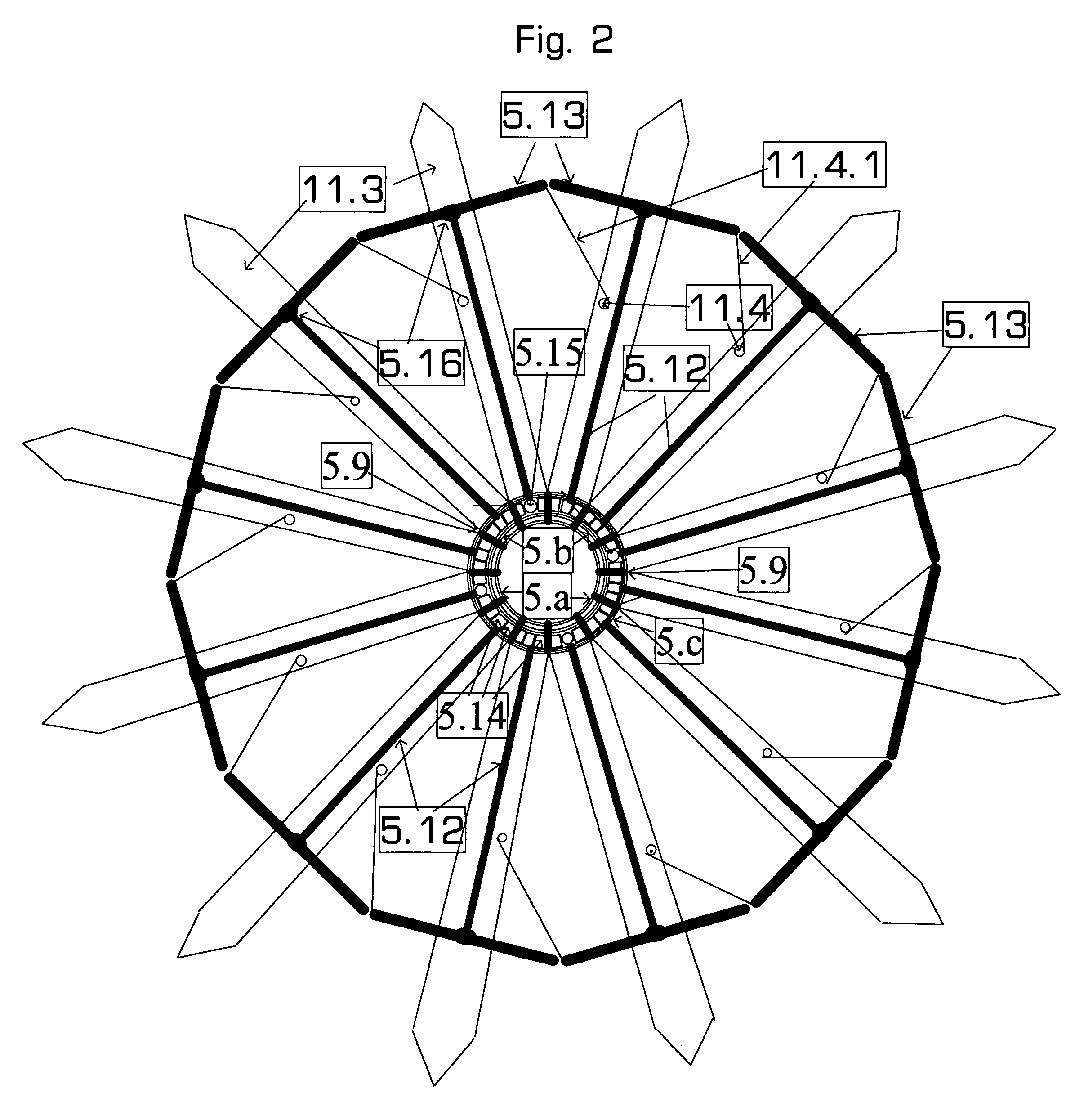Solar sail launch system and solar sail attitude control system
a technology of solar sails and launch systems, applied in the direction of spacecraft, transportation and packaging, spacecraft, etc., can solve the problems of inability to allow equipment as light and cheap, inability to control, and inability to operate as easily and efficiently as possible, so as to achieve better steering/attitude control
- Summary
- Abstract
- Description
- Claims
- Application Information
AI Technical Summary
Benefits of technology
Problems solved by technology
Method used
Image
Examples
Embodiment Construction
Integrated Prior Art
[0035]As it is the scope of this invention to implement essential parts of the inventors prior art previously thought for large space mounted spacecraft into a direct launch able solar sail spacecraft, those prior art items, which are also applied to this application, shall be explained underneath. However the inventor emphasizes, that special adaptations have been designed, which allow to integrate ALL of those features together into one single spacecraft AND deploys in space.
[0036]Docking- and Payload-Station—German patent appl. DE 10 2004 004 543 consisting of one or more Inner Rings which are connected among one another and stretched or hang into the center of the Solar Sail spacecraft.
[0037]To dock several daughter units and payload, movable docking brackets and winches are attached to the station, which allow to take in and hold daughter unit spacecraft and payload.
Inner-Ring-Construction (DE 10 2005 028 3780)
[0038]The Inner-Ring-Construction for Thruster-S...
PUM
 Login to View More
Login to View More Abstract
Description
Claims
Application Information
 Login to View More
Login to View More - R&D
- Intellectual Property
- Life Sciences
- Materials
- Tech Scout
- Unparalleled Data Quality
- Higher Quality Content
- 60% Fewer Hallucinations
Browse by: Latest US Patents, China's latest patents, Technical Efficacy Thesaurus, Application Domain, Technology Topic, Popular Technical Reports.
© 2025 PatSnap. All rights reserved.Legal|Privacy policy|Modern Slavery Act Transparency Statement|Sitemap|About US| Contact US: help@patsnap.com



